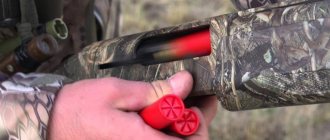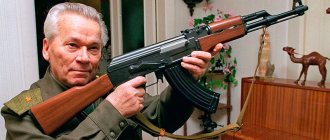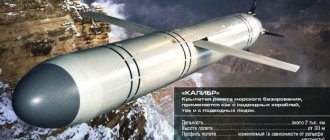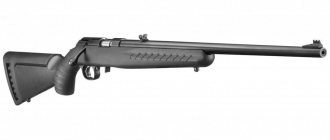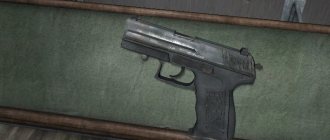6.5 mm Fedorov cartridge
Gunsmith designer Vladimir Grigorievich Fedorov entered Russian history as the creator of the first machine gun in history. Initially, the weapon chambered for the 6.5 mm caliber was called a “machine gun”; the word “machine gun”, which is familiar to us all, appeared later. The new weapon appeared at the front in December 1916, but was produced in a very limited series. Serial production of new weapons began after the end of the First World War. In total, until 1924, approximately 3,400 Fedorov assault rifles were produced. Initially, for his model of automatic weapons, the designer was going to use his own 6.5 mm caliber cartridge, but already during the war, in order to quickly launch the machine into production, the choice was made in favor of the Japanese 6.5x50 mm Arisaka cartridge.
Fedorov assault rifle in section, 3D model
The emergence of 6.5 mm ammunition
The Russian army greeted the 20th century with the famous three-line Mosin system of the 1891 model.
The name “three-line”, which came into widespread use, directly referred to the caliber of this weapon, which was equal to three lines. The line is an obsolete measure of length, which was 0.1 inches or 2.54 mm, and the caliber of the Mosin rifle was 7.62 mm. At that time, the main ammunition for small arms of the Russian Imperial Army was the 7.62x54 mm R cartridge. The rifle itself, as well as the cartridge for it, were completely modern weapons, comparable in capabilities to the best foreign analogues. Fate destined the Mosin rifle for a long life; it was the main weapon of the Russian infantryman in both the First and Second World Wars, and in total approximately 37 million such rifles were produced. Despite the fact that the 7.62 mm cartridge satisfied the Russian military, the search for alternative ammunition was always ongoing. Young GAU officers, among whom was the future outstanding Russian and Soviet designer Vladimir Fedorov, followed the latest developments in the weapons world and modern trends. They were not unaware of the appearance of a new 6.5 mm cartridge at the end of the 19th century. The Italians were the first to adopt such ammunition. We are talking about the 6.5x52 mm Mannlicher-Carcano cartridge for the Mannlicher-Carcano rifle of the same name, which became infamous throughout the world after the shots fired in Dallas on November 22, 1963. It is believed that it was from the Mannlicher-Carcano M91/38 carbine of 6.5 mm caliber that Lee Harvey Oswald shot and killed American President John F. Kennedy. Following Italy, the Scandinavian countries also turned to the new patron. A few years later, the 6.5x55 mm Swedish Mauser cartridge appeared in Sweden and Norway. After the Scandinavians, the Greeks and Romanians paid attention to the new cartridge, who also switched to the 6.5x52 mm Mannlicher-Carcano.
6.5 mm cartridge 6.5×50 SR, Arisaka
At the same time, the 6.5 mm cartridge 6.5×50 SR, or Arisaka, adopted by the Imperial Japanese Army in 1897, had the greatest connection with Russia. Russian troops encountered a new caliber during the Russo-Japanese War of 1904-1905, and already during the First World War, the tsarist government entered into a contract with the Japanese for the supply of Arisaka rifles and carbines and cartridges for them. This was done due to the lack of their own small arms. Arisaka rifles and carbines were actively used in the navy, on the Caucasian and Northern fronts. At the same time, more than 780 million cartridges were purchased for them. Also, the production of such cartridges was started in St. Petersburg, where the St. Petersburg Cartridge Plant produced up to 200 thousand of such ammunition monthly.
Do 6.5mm rounds have enough stopping power?
The transition to a new caliber, which was reduced in relation to all cartridges and shooting systems common at that time, was considered quite obvious.
6.5 mm ammunition had better ballistics, which was evident even when using blunt bullets of that time period. In addition to this, there were other very important advantages: a reduction in the weight of the ammunition carried by the fighter and better suitability of reduced-caliber ammunition for use with automatic weapons, which were beginning to make themselves known more and more loudly. The only issue that caused controversy and doubt among the military was the issue of sufficient lethality of the new cartridges. Vladimir Fedorov was studying this issue based on the experience of the Russo-Japanese War, who for this purpose looked through doctors’ reports on injuries received by soldiers and officers on the battlefields. After analyzing and processing what he read, the young officer of the GAU Artillery Committee came to the conclusion that the new Japanese 6.5 mm rifles, like the old 8 mm rifles of the Murata system, were not particularly distinguished by their lethality. This was especially true for wounds received at medium or long distances. At the same time, in a collision at short distances, the 6.5 mm bullet left terrible wounds. It was noted that the new bullet had a higher flight speed and at close distances, hitting a person, could be deformed and tumble in the tissues, causing severe damage to internal organs. The main condition for the explosive action of such bullets was speed, which made it possible to destroy small bodies, which included, for example, a human skull. In this sense, the destructive ability of the 6.5 mm bullet at close combat distances was higher than that of the 8 mm bullet.
Vladimir Grigorievich Fedorov
These conclusions, formulated by Fedorov, were confirmed in 1911 by tests of new caliber ammunition in Russia. That year, 6 mm, 6.5 mm and 7 mm cartridges were tested in our country. To evaluate the destructive power of new ammunition, shooting was carried out both at horse carcasses and human bodies, and at boards, brickwork, etc. The tests showed that 6.5 mm and 7 mm cartridges have sufficient destructive power, while no significant difference was observed between them, but the 6 mm cartridge was rejected by the GAU commission.
6.5 mm Fedorov cartridge
Vladimir Grigorievich Fedorov graduated from the Mikhailovsky Artillery Academy in 1900 and was almost immediately appointed to serve in the Artillery Committee of the GAU. The young design engineer worked hard to study the features of using new ammunition from different countries. During the development and adoption of the modernized 7.62x54 mm cartridge with a light bullet, the young designer presented his own concept of a new 6.5 mm rifle ammunition. The new cartridge of reduced power had a promising design and was supposed to be ideal for firing from automatic weapons. Fedorov was largely inspired to create ammunition of this caliber by the experience of the Russo-Japanese War and the use of the 6.5x50 mm cartridge by the Japanese.
Fedorov assault rifle model 1919
Already in 1911, Vladimir Fedorov presented his 5-round automatic rifle chambered for a regular 7.62x54 mm cartridge (in modern terminology, a self-loading rifle). In 1912, the new weapon passed the testing stage at the training ground, and the artillery committee decided to purchase a batch of new rifles. At the same time, the designer was working on creating a full-fledged machine gun chambered for a 6.5 mm cartridge of his own design. The cartridge created by Fedorov was supposed to be more powerful than the Japanese ammunition - 6.5x57 mm. Especially for it, it was planned to produce three types of pointed bullets: two with a lead core (length 31.37 mm and 32.13 mm, respectively) and an armor-piercing bullet with a tungsten core (length 30.56 mm). The mass of the cartridge was approximately 21 grams.
Designed by Vladimir Fedorov, the cartridge had a bottle-shaped sleeve and did not have a protruding rim; the sleeve itself was quite long (57.1 mm) and was made of brass. In terms of the shape and design of the cartridge case, the cartridge was similar to the German 7.92x57 mm caliber cartridge (Mauser). The main advantage of the cartridge of reduced power and caliber was the reduction in recoil when firing, which made the ammunition more convenient when used in automatic weapons, in particular the automatic rifle that the designer was working on (compared to ordinary rifle cartridges of those years). In fact, Vladimir Fedorov immediately created a system - a “weapon-cartridge”. Taking as a basis a bottle-shaped cartridge case without a protruding rim, the designer provided himself with the groundwork for creating a simplified system for feeding cartridges and extracting spent cartridges, as well as capacious magazines, which were already increased to 25 cartridges in the 1920s.
The work that Fedorov began in the 1910s anticipated the future appearance of an intermediate cartridge for automatic weapons and was the first step in this direction. The machine gun and its cartridge created by Fedorov were tested in 1913, a year before the start of the First World War. As weapons historian Andrei Ulanov notes, under normal conditions, the rounds fired during testing amounted to 3,200 rounds; during the entire testing period, 1.18 percent of delays were noted; for that period of time and stage of testing, this was considered a good result. The designer himself wrote that the work on the new cartridge was considered valuable and important, and preliminary tests of the machine gun and its cartridge turned out to be so favorable that according to the drawings developed by Fedorov for further testing, it was planned to produce 200 thousand cartridges at once for a comprehensive test of the new ammunition.
6.5 mm Fedorov cartridge
Unfortunately, the development of the machine gun and its cartridge was prevented by the outbreak of the First World War in 1914. Wartime no longer allowed experimentation and development of weapons; experimental work at factories was stopped. At the same time, the Russian Empire was faced with a serious shortage of conventional rifles and ammunition for them, which was the reason for the purchase of related products abroad. It was for this reason that in 1916, Vladimir Fedorov converted his machine gun to the Japanese 6.5x50 mm Arisaka cartridge; at that time there was already a sufficient amount of cartridges of this type in Russia.
More than 100 years have passed since the events described, but the 6.5 mm cartridge is once again becoming relevant and in demand. At the beginning of 2022, information began to appear in various media that the small arms of the American army were undergoing a radical transformation. The main transformation will be the replacement of 5.56x45 mm NATO cartridges with new 6.5 mm cartridges. The first samples of new ammunition are planned to be tested before the end of 2019, and new automatic rifles and light machine guns will have to be sent for military testing in the 2020s.
What is small caliber used for?
Small-caliber weapons can be called a good example of the fact that the main factor in shooting accuracy is not the weapon, but specifically the type of ammunition. After the development of .22 LR cartridges, the shot lengthened significantly, and the structural feature of such a side-ignited cartridge case allowed engineers to make more than 10 types of cartridges, for which special types of weapons were created in the future.
TOZ shotguns
Currently, Russian hunters are provided with a large assortment of small-caliber types of weapons. The most popular brand among Russian professional shooters is considered to be a rifle belonging to the TOZ family.
The first such rifle was made by a Soviet designer who lived in the city of Tula. This happened in 1932. This weapon became famous due to its simple design, reliability and reliability. This rifle was widely used for training among novice shooters. The main purpose was to hunt small animals. Since the rifle had very good accuracy, the weapon became one of the favorites among hunters and professional athletes. On the modern weapons market there are many different modifications of the TOZ brand chambered for small-caliber cartridges:
- TOZ-16. This modern rifle occupies a leading position in terms of sales in Russia.
- TOZ-17. This is a modern modification of the outdated version of TOZ-8.
- Carbine "Sable". This example of a firearm was created on the basis of a rifle called “Biathlon”. This carbine is equipped with two types of magazines, the capacity of which is 5 and 10 rounds. It is also possible to install an optical sight on it.
- TOZ-78. A very silent, accurate weapon.
- TOZ-78-04M. This is a modified model of the previous model of the TOZ-78 rifle.
- TOZ-78-01M. This model is another modification of the TOZ-78 weapon. The main difference is the ability to install additional equipment for quieter and more accurate shooting.
In conclusion, it is worth noting that the .22 LR cartridge was used for sport shooting. Shotguns were used both single-shot and multi-shot. In some disciplines, different modifications of weapons could be used in competitions, while in others, athletes had to use only factory versions. Thanks to the relatively low energy of the cartridges after firing, competitions and training can be held in simple shooting ranges. Therefore, it is not at all necessary to rent a separate room or shooting range for small-caliber bullets.
Sports varieties
At international competitions, general rules require that all athletes have exactly the same conditions. Cartridges and weapons must comply with accepted standards. The use of .22 LR cartridges in sports can be explained by its low noise level, good penetration ability at a very short distance, low power, low recoil, as well as high reliability and accuracy. In addition, they are one of the cheapest options with a powder charge.
When shooting at a distance of about 25 m, the sight ratio should rise by about 2 cm. If the distance increases to 75 m from the target, then the bullet will drop from the aiming point by about 7 cm. If the distance is 100 m from the target, then the bullet will deflect approximately 25 cm down.
The cartridges that are used by athletes in various competitions have an all-metal bullet, which is made of lead. The mass of this ammunition is about 2.5 g. The initial speed of the bullet, which is measured from the muzzle of the barrel, is 330 m/s. Under this condition, the speed of a bullet made of lead, thanks to the rifling in the barrel, begins to stabilize. The best results in terms of accuracy can be achieved if you shoot indoors at room temperature, as well as in conditions of normal air humidity.
Permission to shoot
As for obtaining permission to shoot from small-caliber weapons, it will be no different from obtaining permission to use a rifled barrel. To do this, the hunter must collect certain documents and then submit them to the LRO. To be more precise, the following documents are required:
- Certificate of passing a medical examination.
- Hunting license.
- A report that was drawn up by the local police officer, which contains information regarding the storage conditions of firearms.
It should also be remembered that a permit for a rifled weapon can only be obtained by a person who has at least 5 years of experience in handling smooth-bore guns.
